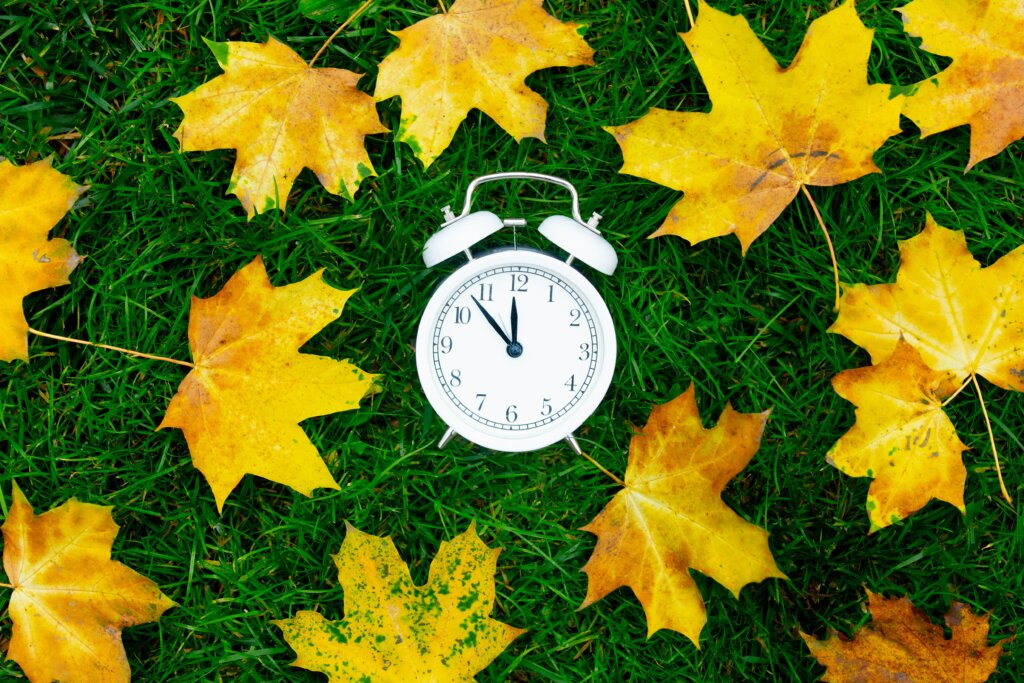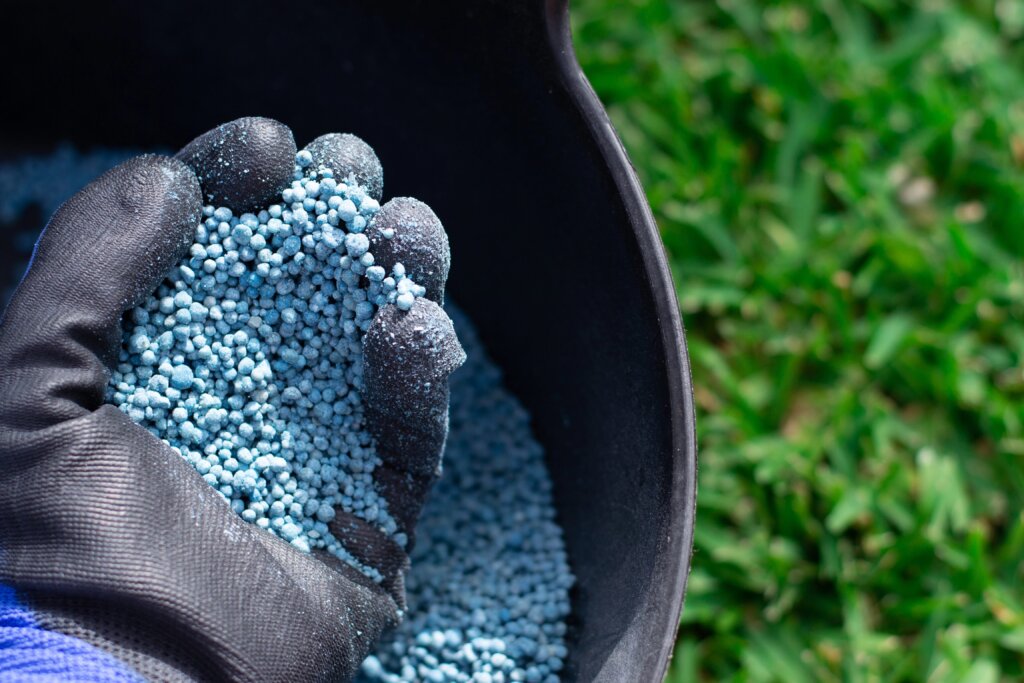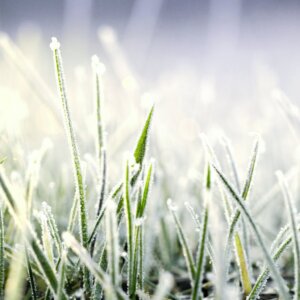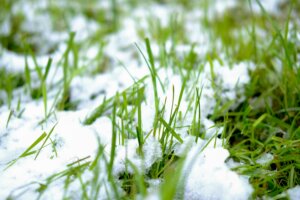Pennsylvania’s updated fertilizer law, effective in 2024, restricts nitrogen application to no more than 0.9 pounds per 1,000 square feet per application in fall to protect water quality, emphasizing the importance of precise timing and application rates for lawn fertilization this season, as outlined by the Pennsylvania Department of Agriculture.
This means fertilizing at the right time is not only beneficial for lawn health but also crucial for environmental compliance.
Key Takeaways
- Fertilize in early to mid-fall before the first frost for strong roots and a healthy lawn.
- Use a fertilizer rich in nitrogen and potassium to prepare grass for winter.
- Combine fertilizing with mowing, aeration, and weed control for the best results.
- Avoid fertilizing on frozen or soaked ground to prevent nutrient loss.
Many Pennsylvania homeowners face challenges like compacted soil and inconsistent rainfall that can affect fertilizer performance. For expert help tailored to your area, explore Terra’s local lawn care service areas to find professional support near you.
When Should I Fertilize My Lawn in the Fall?

Timing is crucial for a healthy lawn in Pennsylvania; the table below summarizes the optimal periods and best practices for fall fertilizing.
| Period | Recommended Action | Tips & Notes |
|---|---|---|
| Early Fall (Sept–mid-Oct) | Apply first fall fertilizer after Labor Day | Warm daytime temperatures help root growth; best applied in morning or early evening |
| Mid-Fall (up to first frost) | Optional second, lighter application | Avoid frozen ground; supports winter dormancy and healthy lawn in early spring |
| General Timing Tips | Apply when lawn is dry, but light rain expected within 1–2 days | Prevent runoff into storm drains; calibrate spreader for even fertilizer application |
Following this schedule ensures your cool-season grasses build strong roots and a green lawn ready for winter and early spring growth. For seasonal consistency, see our guide on when to fertilize your lawn in spring.
Choosing the Right Fall Fertilizer
The right fertilizer ensures strong roots, healthy grass blades, and a beautiful lawn next spring.
Key considerations:
- Nitrogen: Promotes leaf growth and energy storage.
- Potassium: Strengthens root systems and improves winter survival.
- Phosphorus: Supports root development; especially important if soil tests indicate a deficiency.
For cool-season grasses common in PA (fescue, bluegrass, ryegrass), use slow-release fall fertilizers for steady nutrient delivery.
Organic options are excellent for long-term soil health. Terra Lawn Care offers expert recommendations tailored to your lawn type, learn more on our lawn fertilization service page.
5 Steps: Fall Lawn Fertilization Techniques

Proper application is as important as timing. Follow these steps:
1. Prepare Your Lawn Before You Fertilize
Clear debris and mow grass to 2–3 inches so your lawn fertilizer reaches the soil easily.
2. Aerate the Soil for Better Nutrient Absorption
Aerate to help essential nutrients and water reach roots stressed by summer heat.
3. Calibrate Your Spreader to Control How Much Fertilizer You Use
Set your spreader correctly to manage how much fertilizer you apply and ensure even coverage.
4. Apply Fertilizer at the Right Time
Fertilize in early fall before the ground freezes for a stronger root system and better lawn.
5. Avoid Runoff and Water Properly
Lightly water after you apply fertilizer to help nutrients soak in and avoid runoff.
Pro Tip: Split your fall fertilizer into two smaller applications for steady nutrients and a strong head start in most regions. For more guidance on ideal application timing, visit when to apply lawn fertilizer.
Why Fall Fertilizing Is Crucial for PA Lawns
Fall fertilization strengthens cool-season grasses, helping them build stamina before winter hits. During fall, grass focuses on root system growth rather than blades, which sets the stage for a lush, green lawn in early spring.
Applying fall lawn fertilizer at the right time helps:
- Boost root growth for strong roots.
- Store energy to withstand winter injury.
- Maintain a healthy lawn ready for early spring greening.
By understanding the exact timing and nutrient balance your lawn needs throughout the year, you’ll set yourself up for success beyond the fall season. Explore our full month-by-month schedule for PA lawns to keep your lawn thriving year-round.
Complementary Fall Lawn Care Practices
Fertilization works best when combined with:
- Mowing: Leave clippings to recycle nutrients naturally.
- Weed control: Remove weeds before they set seeds.
- Watering: Maintain soil moisture, especially after fertilizing.
To keep these practices aligned with your lawn’s seasonal needs, check out when is the best time to fertilize your lawn for region-specific guidance that complements your fall lawn care routine.
Preparing Your Lawn for Winter Dormancy
Before winter hits, ensure your lawn has:
- Strong roots built from fall fertilization.
- Adequate nutrients are stored for early spring recovery.
- Proper mowing and debris removal to reduce winter injury.
Terra Lawn Care, locally owned and family operated since 2003, provides professional guidance to ensure your lawn is ready for PA winters. Contact us for personalized recommendations.
Achieve a Beautiful Lawn by Early Spring
Fertilizing your lawn in the early fall gives your grass the essential nutrients it needs to grow deeper roots, resist winter stress, and emerge vibrant in the early spring. By applying the right fall fertilizer at the right time and pairing it with proper mowing and aeration, you’ll maintain a strong, green lawn that thrives year-round. For trusted local expertise and professional lawn care solutions, visit Terra Lawn Care.
Frequently Asked Questions About Fall Fertilization
The best fall lawn fertilizer is one rich in nitrogen, which supports root growth and helps your turf recover from summer stress. Look for a lawn fertilizer labeled as “slow-release,” as it provides a steady supply of nutrients while preventing too much fertilizer from burning the grass.
Avoid fertilizing when the ground is frozen or before heavy rain, as this can cause nutrient runoff and waste products. You should also wait if the soil is saturated or if warm-season grasses are dormant, since they won’t absorb nutrients effectively during that time.
Yes, but use a small amount of starter lawn fertilizer that contains nitrogen to give new grass a boost without overwhelming it. Applying both together helps establish roots and fill bare patches, giving your lawn in the fall a clean slate for thicker growth next season.
In most parts of the country, you can still fertilize your lawn in early November if the ground hasn’t frozen. Late-season fertilization offers benefits like stronger roots and better color retention, especially when using two applications of slow-release fertilizer spaced a few weeks apart.



